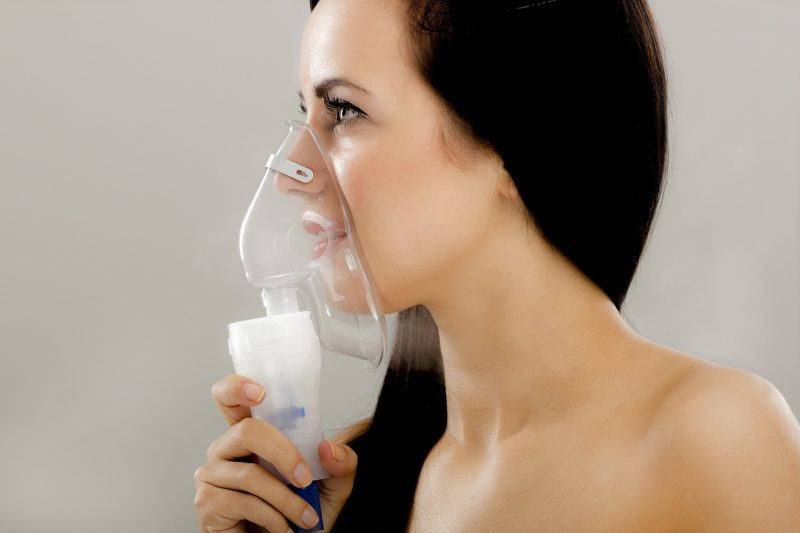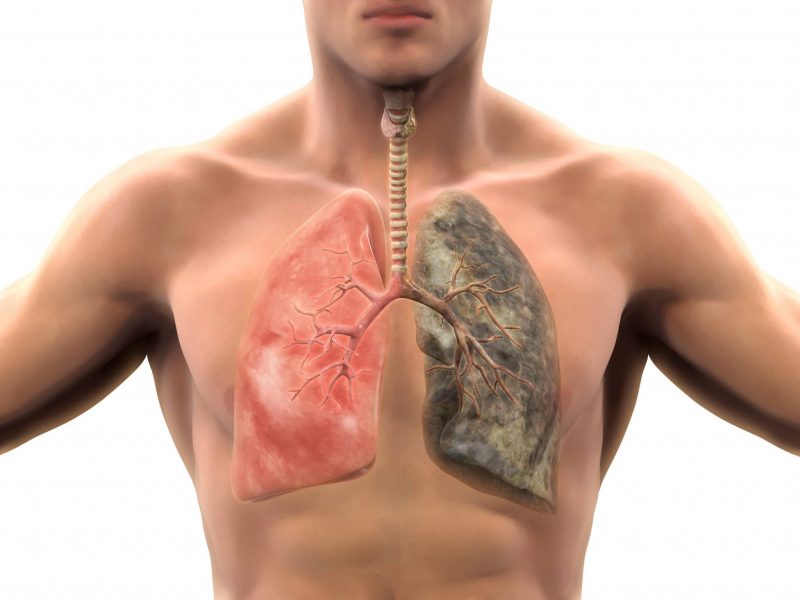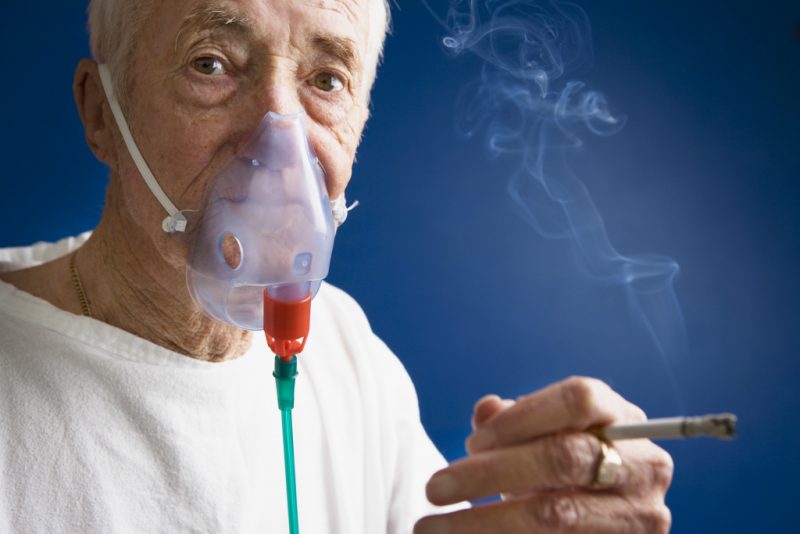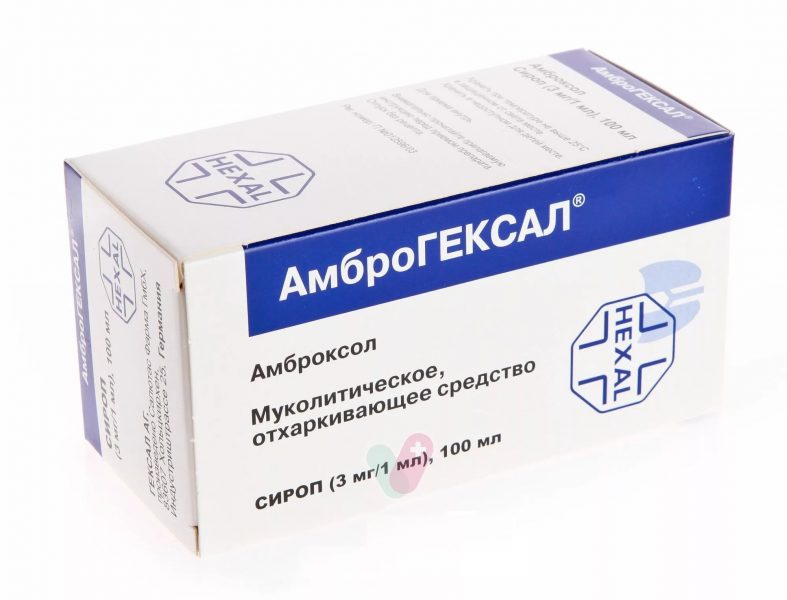Bronchitis is an inflammatory disease of the bronchial mucosa. Most often, it develops against the background of respiratory infections, but may have other reasons. To understand how to treat bronchitis in a particular case, it is important to identify these reasons. Competent therapeutic tactics will help eliminate the main symptoms of the disease in a few days.
Material Content:
The basic principles of treatment of bronchitis in adults
The treatment of bronchitis is the competence of a pulmonologist, but in mild forms this disease is treated by specialists of a wide profile - therapists.

What drugs, antibiotics help against the disease?
Before prescribing any drug, the doctor determines the cause of the disease. Bronchitis of a viral, bacterial and allergic nature requires a different approach.
Therefore, in the list of drugs for the treatment of bronchitis there are funds from different groups:
| Drug group | Title | Application | Contraindications |
|---|---|---|---|
| Mucolytics | Bromhexine | 1-2 tablets with a dosage of 8 mg 3 times a day | • exacerbation of gastrointestinal ulcer; • I trimester of pregnancy; •lactation. |
| Ambrohexal | 1 tablet with a dosage of 30 mg 3 times a day | • gastrointestinal ulcer in the acute phase; • I trimester of pregnancy; • individual intolerance. | |
| Fluimucil | 1 effervescent tablet dissolved in a glass of water, 1 time per day | • gastrointestinal ulcer in the acute phase; •lactation; • individual intolerance. | |
| Bronchodilators | Salbutamol | 1 tablet with a dosage of 4 mg 2-4 times a day | • heart rhythm disturbances; •heart diseases; •epilepsy; •diabetes; • thyroid disease; •pregnancy. |
| Theotard | Orally in capsules. Dosage is set individually. | •epilepsy; • gastritis and ulcerative lesions of the gastrointestinal tract; •heart diseases; • bleeding and hemorrhage; • prostate hypertrophy; •pregnancy. | |
| Antiviral | Viferon | Rectally, 1 suppository with a dosage of 500,000 IU 2 times a day | • individual intolerance. |
| Tamiflu | 1 tablet with a dosage of 75 mg 2 times a day | • individual intolerance; • pregnancy and lactation - with caution. | |
| Antibiotics | "Flemoxin Solutab" | 1 tablet 500 mg 2 times a day | • pregnancy and lactation; • kidney and liver dysfunctions; • pathology of the gastrointestinal tract; • lymphocytic leukemia and mononucleosis. |
| Ofloxacin | 1-3 tablets 2 times a day. Dosage is calculated individually. | • pregnancy and lactation; • epilepsy and neuropathy; • individual intolerance. |
Antibiotics for bronchitis are prescribed only if an infection of a bacterial origin is detected. Antiviral drugs are recommended for the treatment of viral infectious bronchitis. Bronchodilators - with the development of bronchospasm or in cases when hypersecretion of mucus is observed in the bronchi, and they cannot be released from sputum on their own.
Therapy of bronchitis of various origins also implies the use of anti-inflammatory and immunomodulating drugs: Timogen, Aflubin, Immunal. Antihistamines may also be prescribed - Suprastin, Zirtek.
Inhalation as a treatment method
Inhalations - a mandatory procedure that is part of the bronchitis therapy program.

Direct delivery of the drug to the bronchi helps to achieve the following effects:
- liquefaction of thick sputum;
- hydration of the mucous membrane;
- reduction in inflammation;
- removal of bronchospasm.
It is possible to carry out inhalation at home using the "grandfather" method - breathe over a hot solution, covered with a towel. But it is much more convenient and safer to perform this procedure using a nebulizer.
The nebulizer allows the use of pharmaceutical preparations for bronchitis for inhalation - “Fluimucil”, “Lazolvan”, “Gensalbutamol”, “Berodual”. In the absence of the device, steam inhalations are carried out with home solutions, which will be discussed below.
It is strictly forbidden to carry out steam inhalation if bronchitis is of a bacterial nature and is accompanied by purulent discharge.
Also, this procedure is contraindicated in case of cardiovascular diseases, heart attacks and strokes in history, severe pathologies of the respiratory system (emphysema, pneumothorax, etc.).
Folk remedies

In the piggy bank of folk remedies there are many useful recipes that can be used as auxiliary in the treatment of bronchitis:
- Infusion for inhalation of chamomile and pine buds. 30 grams of chamomile flowers and 30 grams of pine buds put in a thermos and brew 0.5 liters of boiling water. Screw on the lid and insist 1 hour.
- Expectorant and anti-inflammatory infusion for inhalation. Make a herbal collection: 1 tablespoon of a sheet of eucalyptus, licorice root, calendula and chamomile flowers, sage herb. Put everything in a thermos, pour 0.5 liters of boiling water and tighten the lid. Insist 2 hours.
- Propolis solution for inhalation. Pour 1 tablespoon of propolis alcohol tincture into 1 cup of hot water and use for steam inhalation.
- Expectorant with honey and aloe. Mix 120 ml of honey, 150 grams of butter and 20 ml of aloe juice and store in the refrigerator. With bronchitis 2 times a day, dilute 2 teaspoons of the product in 1 cup of hot milk.
- Broth of the marshmallow root. On 1 glass of hot water, put 2 tablespoons of dry crushed marshmallow root and place in a water bath.Hold under cover for 30 minutes, cool, filter and consume 0.5 cups 4 times a day.
With bronchitis, it is useful to drink a lot of warm vitamin drinks. For this, general strengthening infusions of rose hips, dried fruit compotes are useful. At a temperature, you can cook fruit drinks from cranberries, lingonberries, black currants. Tea with raspberries is another universal remedy for traditional medicine for the treatment of many respiratory diseases.
Read also:treatment of bronchitis in adults
Massage and physiotherapy
Supporting methods for the treatment of bronchial inflammation are massage and breathing exercises.

The objectives of these manipulations are as follows:
- improve local blood circulation in the bronchial region;
- improve lymph flow in the bronchial region;
- activate bronchial muscle contraction and epithelial motility;
- normalize oxygen metabolism.
With bronchitis, percussion, drainage and vibration massage are performed:
| Type of massage | Execution technique |
|---|---|
| Percussion | It is performed from the back, and then from the side of the chest: 1. The chest is vigorously rubbed in the direction of the lymph flow - from the bottom up. 2. The areas of attachment of the ribs to the vertebrae are rubbed. 3.From the periphery to the center, the intercostal spaces are rubbed. 4. The muscles of the neck are flexed. 5. A symmetrical sequential tapping of the chest through the open palm of one hand is performed. |
| Drainage | Performed from the back: 1. The chest in the direction of the lymph flow is vigorously rubbed. 2. The fingertips perform a point effect on the intercostal spaces from the bottom up. 3. On exhalation, the patient is forced to compress the chest several times from the sides. |
| Vibrating | It is performed from the back, and then from the side of the chest: 1. The chest is rubbed in the direction of the lymphatic flow. 2. A sequential symmetrical tapping of the chest is carried out directly with a fist brush. |
Massage is contraindicated in case of neoplasms in the massage zone, with epilepsy, hypertension, skin inflammatory processes and increased body temperature.
Respiratory gymnastics is especially indicated for improving gas exchange in tissues and cleaning the sputum of the bronchi.
The Strelnikova complex is especially popular:
- Exercise Pump. Done while standing. On a sharp noisy breath, the body leans forward, on a smooth long exhalation it returns to its original position.
- Exercise "Hold your shoulders." Performed by sitting. Hands are bent at the elbows, on a sharp noisy breath, the elbows vigorously move towards each other, on a smooth exhalation they are parted. It is done alternately with the mouth and nose.
- Exercise "Ladoshki." 100 sharp noisy breaths are made through the nose while simultaneously clenching the palms of your hands into a fist. Exhalations are smooth. Intervals between breaths 5 seconds.
Breathing exercises are contraindicated in case of elevated body temperature, pulmonary tuberculosis, oncological processes, thrombophlebitis.
Treatment depending on the form of bronchitis
Depending on the form of bronchitis, the approach to therapy may have a number of nuances.
Chronic
Chronic bronchitis is diagnosed if the inflammatory process goes into a sluggish form. A wet cough at the same time accompanies a person constantly, is painful. The temperature rises occasionally, to subfebrile values, other respiratory symptoms are not observed.

Therapy of chronic bronchitis is carried out by a pulmonologist.
Usually, he prescribes individual courses, choosing drugs based on the nature of the disease:
- simple chronic bronchitis - antiviral, antimicrobial, mucolytic, anti-inflammatory and general strengthening agents;
- complicated chronic bronchitis - antibiotics, bronchodilators, mucolytics, anti-inflammatory, general strengthening agents;
- purulent-mucous chronic bronchitis - antibiotics, mucolytics and expectorant drugs, anti-inflammatory, restorative agents.
If chronic bronchitis is complicated by other pathologies (hypoxemia, hypercapnia, pulmonary heart), other specialized specialists are connected to the treatment and the list of drugs is expanding.
Acute
Acute bronchitis has a pronounced clinical picture and is accompanied by high fever, general intoxication and severe cough. The cough can be either dry or wet. At an early stage of sputum, very little is separated, it is thick and viscous. In the future, liquefies, its amount increases.

The treatment of acute bronchitis is carried out according to general principles. Drugs are selected based on the nature of the disease.
Obstructive
Obstruction in medicine is a pathological process in which the gaps of the hollow organs are closed. Accordingly, obstructive bronchitis is characterized by edema and narrowing of the lumen of the bronchi, the accumulation of mucus in them and difficulty breathing.

To treat this form of the disease, the following groups of drugs are prescribed:
- bronchodilators - to relieve spasm and widen the lumen of the bronchi;
- mucolytic - for thinning sputum;
- anticholinergic - to reduce the tone of the respiratory muscles;
- anti-inflammatory - to restore the bronchial mucosa.
Obstructive bronchitis can lead to the development of respiratory failure, emphysema, and complications of the cardiovascular system. Treatment should be carried out under strict medical supervision.
Smoker's bronchitis
Often, for the diagnosis of smoker's bronchitis, other than coughing, other symptoms are not needed.

Depending on the stage of the disease, the cough may be of a different nature:
- Stage 1 - mainly in the morning, mild, without sputum;
- Stage 2 - wet, with yellow-brown sputum, at any time of the day;
- Stage 3 - persistent, strong, with thick brown sputum.
In parallel with the intensification and change in the nature of cough, shortness of breath develops with smoker's bronchitis.
In the initial stages, the disease is treated with mucolytic and anti-inflammatory drugs. If pus appears in the sputum, antibiotics are added to the list. In the later stages of the disease, bronchodilators may be required.
The treatment of smoker's bronchitis has a prospect only if the patient quits smoking.
Allergic
Allergic bronchitis develops in response to the penetration of an allergen into the bronchi - pollen, dust, wool, mold, chemical fumes, etc. The difference between this form of the disease is that the general condition of the person does not suffer, but the cough can be very strong, painful, accompanied by bronchospasm.

An allergist-immunologist is involved in the treatment of allergic bronchitis. In addition to standard mucolytics and bronchodilators, he prescribes antihistamines and enterosorbents.
How to relieve cough with bronchitis?
With bronchitis, it is highly recommended not to use cough suppressants. Such drugs contribute to stagnation of sputum in the bronchi and the transition of bronchitis into complicated forms.

Cough can be alleviated by the above drugs from the group of mucolytics.
They contribute to increased secretion of sputum and its better discharge. When a cough becomes wet, productive, the condition improves significantly.
How to cure bronchitis during pregnancy?
Therapy of this disease during pregnancy is carried out in the same way as the usual treatment of bronchitis in adults. The difference lies in the careful and rigorous selection of drugs - especially from the group of antibiotics. The emphasis in the treatment of bronchial inflammation during pregnancy is on immunomodulating and anti-inflammatory drugs, antiseptic inhalations and physiotherapy.

Since bronchitis is prone to be complicated by pneumonia and other severe pathologies, self-medication is unacceptable. The course of the disease and the course of therapy should be monitored by a doctor.
- Katya












